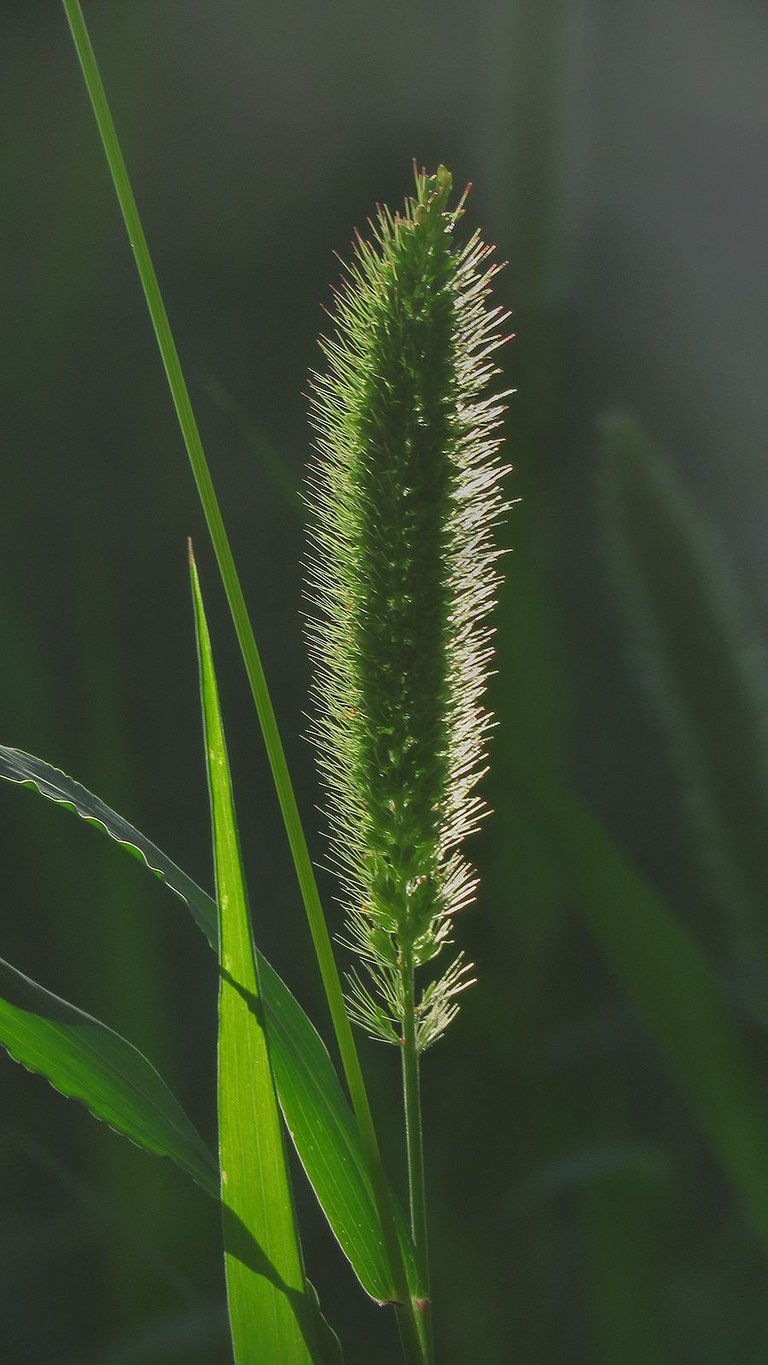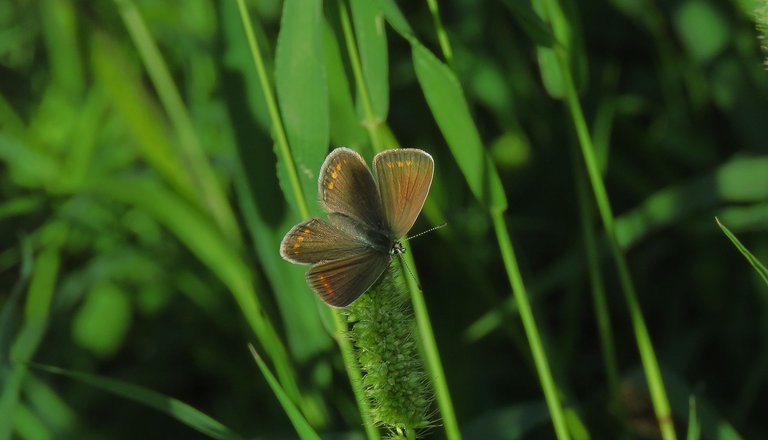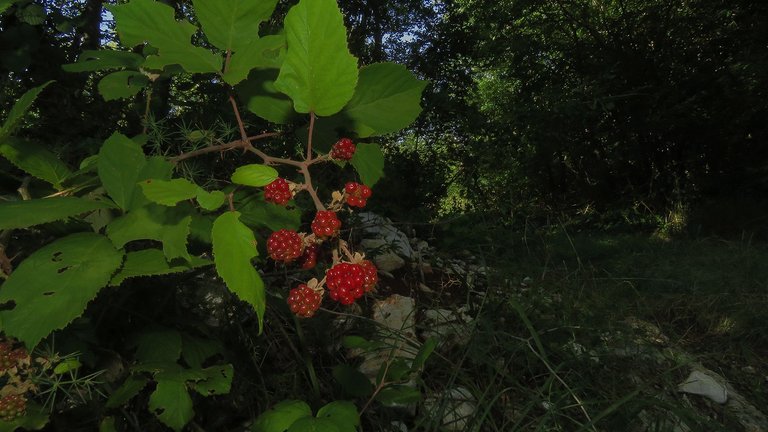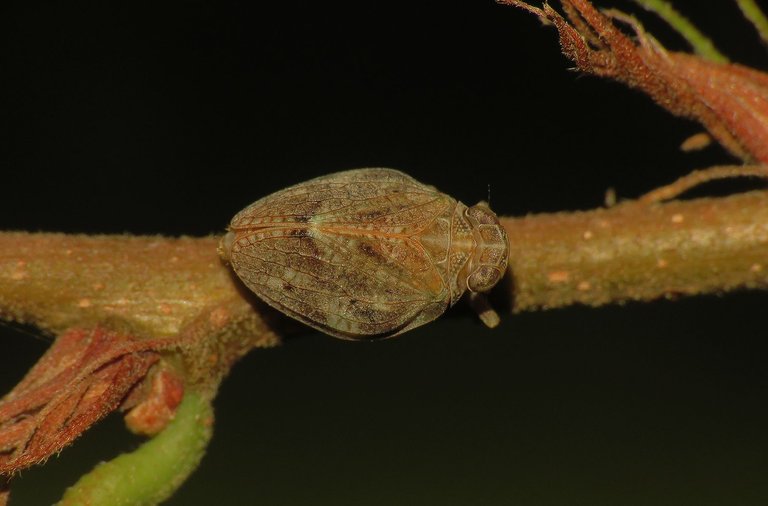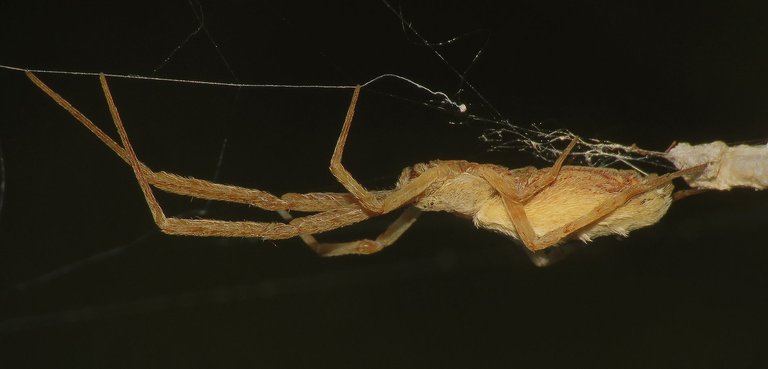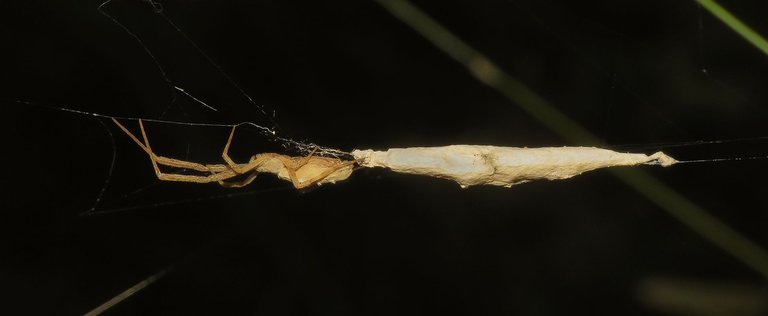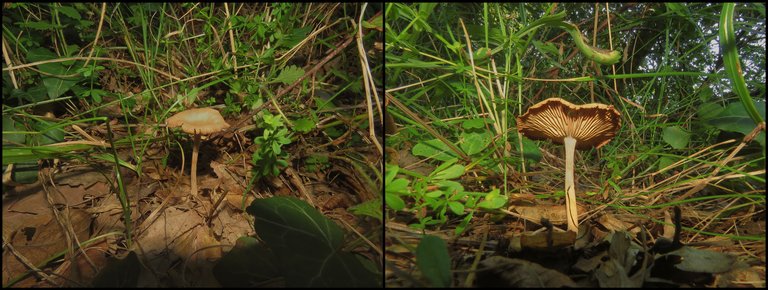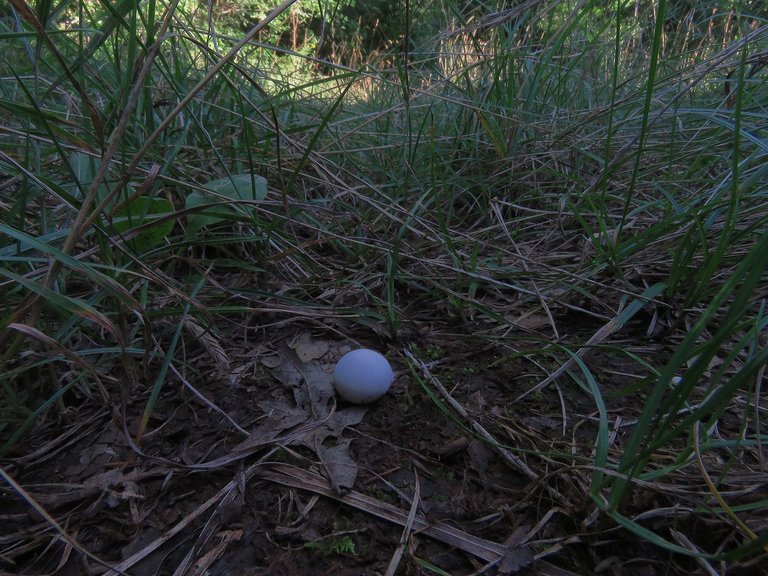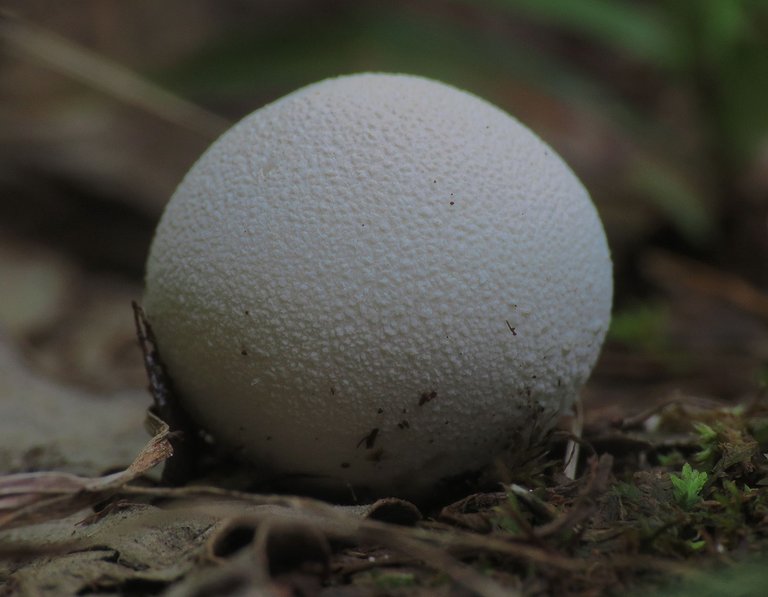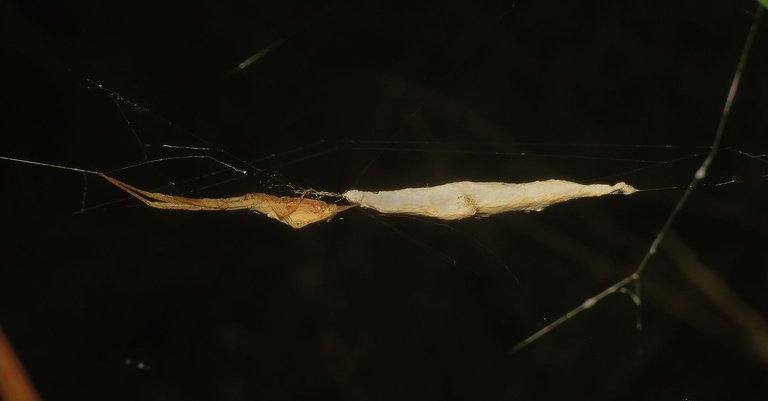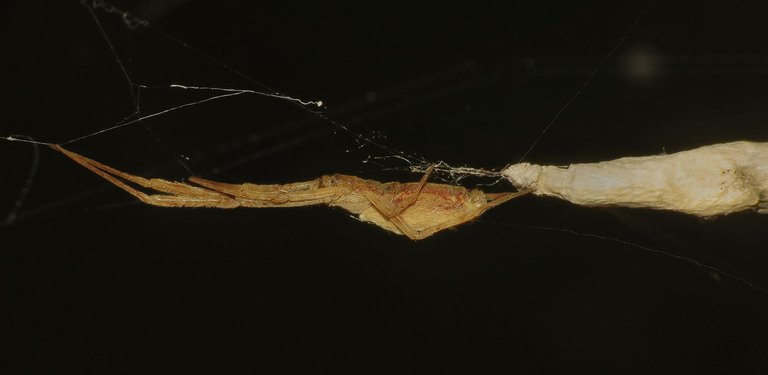The day was warm and sunny, even hot around noon. I had to do some stuff in the nearby city of Pula, so I didn't spend the whole day at home as I usually do these days. When the city chores were done, I decided to do something purely for pleasure, so I drove northward in search of a place to spend an hour or two in search of insects, spiders, and inspirational stuff like that.
I didn't have to drive far. Only about thirty kilometers from the city, somewhere along the road that leads to the village of Kanfanar, I found what I was looking for ...
... a small clearance covered with many interesting herbaceous plants and surrounded by shrubs and trees.
It was late in the afternoon, the evening was just around the corner, and the small details provided by the surrounding nature were lit beautifully.
In the above photograph, you can see a portrait of the Setaria italica grass.
Here you can see a small butterfly that was resting and posing there in the grass. In the following photograph ...
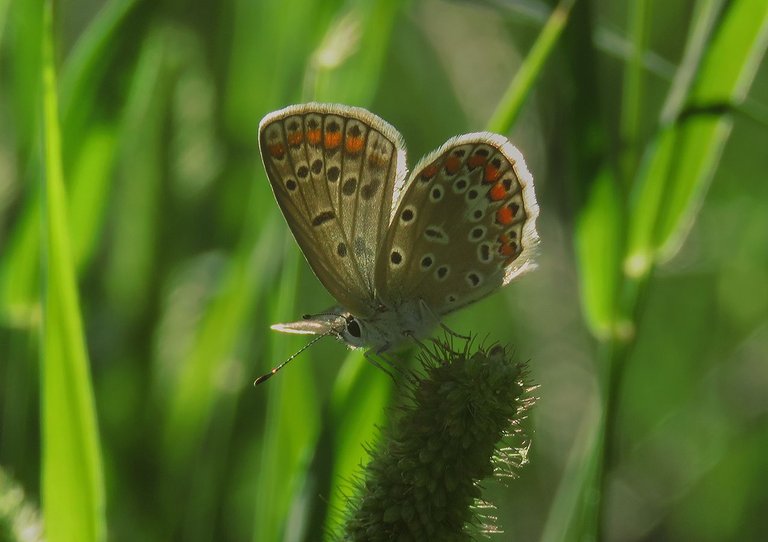
... I came a bit closer and I zoomed a bit more, so you can take a better look at the details.
In this shot, the scene isn't lit that attractively but you can see the upper side of the butterfly's wings. When it comes to the name of the species, I can tell you that this is Aricia agestis, a butterfly from the
Lycaenidae family.
Here you can take a look at the leaves of the small oak tree. The oak in question is Quercus cerris. Not far from there ...
... I photographed a group of lovely red blackberries. The fruits will get black when they ripen.
On the leaf of the same shrub, I found an interesting, well-camouflaged insect.
This is the Dictyophara europaea, commonly known as the European lantern fly, a Hemipteran species from the Dictyopharidae family.
On one of the nearby plants, a shrub or a small tree perhaps, I photographed another well-couflaged Hemipteran species. This one was adapted to pass unnoticed on brown surfaces.
The name of the species is Issus coleoptratus. It's a planthopper from the Issidae family.
Unlike most members of their Family, these planthoppers are unable to fly.
Here you can take a look at the leaves and branches of the Cornus sanguinea shrub. In the herbaceous vegetation under this shrub ...
... I found a spider from the Uloboridae family. Not far from the spider ...
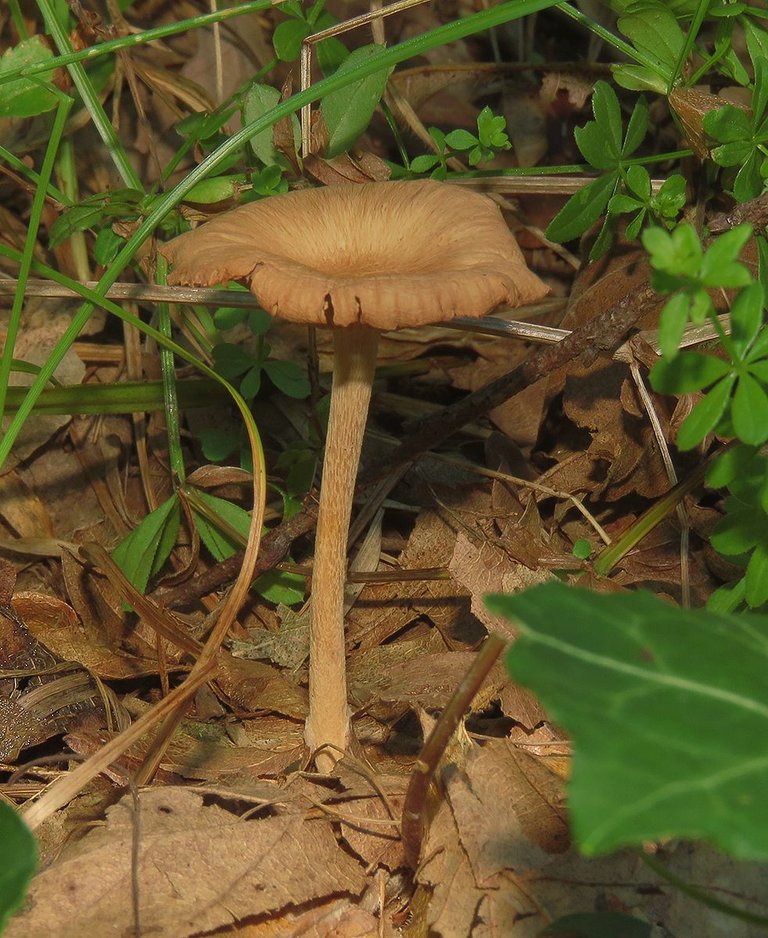
... I photographed this small mushroom.
When it comes to the spider, the name of the species is Uloborus walckenaerius. The spider was hanging on the web in a pose which made it hard to notice when I first saw it but when I came closer Uloborus walckenaerius moved assuming the pose you can see in this photograph. Since the spider looks pretty cool when it mimics a dry twig or some other dry plant part fallen from the surrounding vegetation and caught in the web, I decided to return later and try to get a photograph that shows what I just clumsily described with a bunch of words.
When it comes to the mushroom, I can't tell you the name of the species.
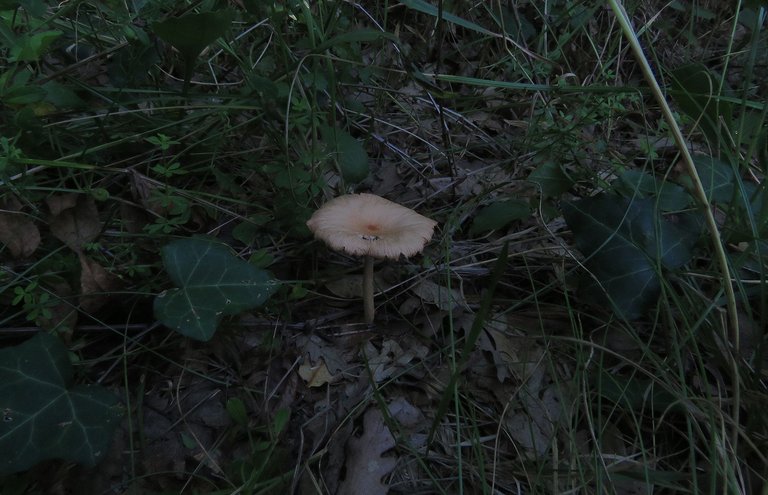
In this photograph, the mushroom is photographed in natural light that was pretty low in the shade of the shrubs.
Meanwhile, the tops of the small oaks were nicely illuminated by the sunlight of the late afternoon.
Here I zoomed in, so you can take a better look at the foliage.
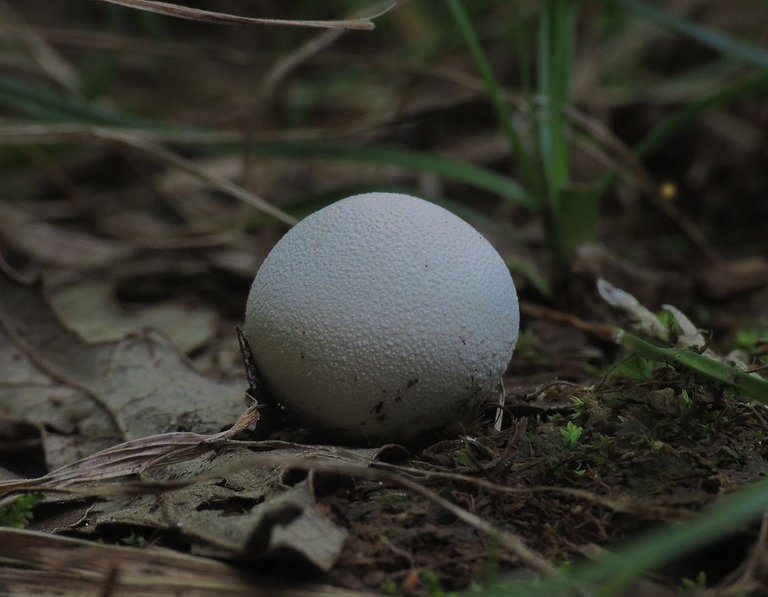
Down on the ground, in the shade of the small, shrub-like oak trees, I found another mushroom.
From a distance, it looked like something produced in some kind of factory, a perfect little sphere.
The name of the species is Bovista pusilla.
The best-illuminated area was more or less in the midlle of the clearing surrounded by shrubs and trees. I photographed one plant and two insects. I mean, one kind of plant and two insect species, more precisely.
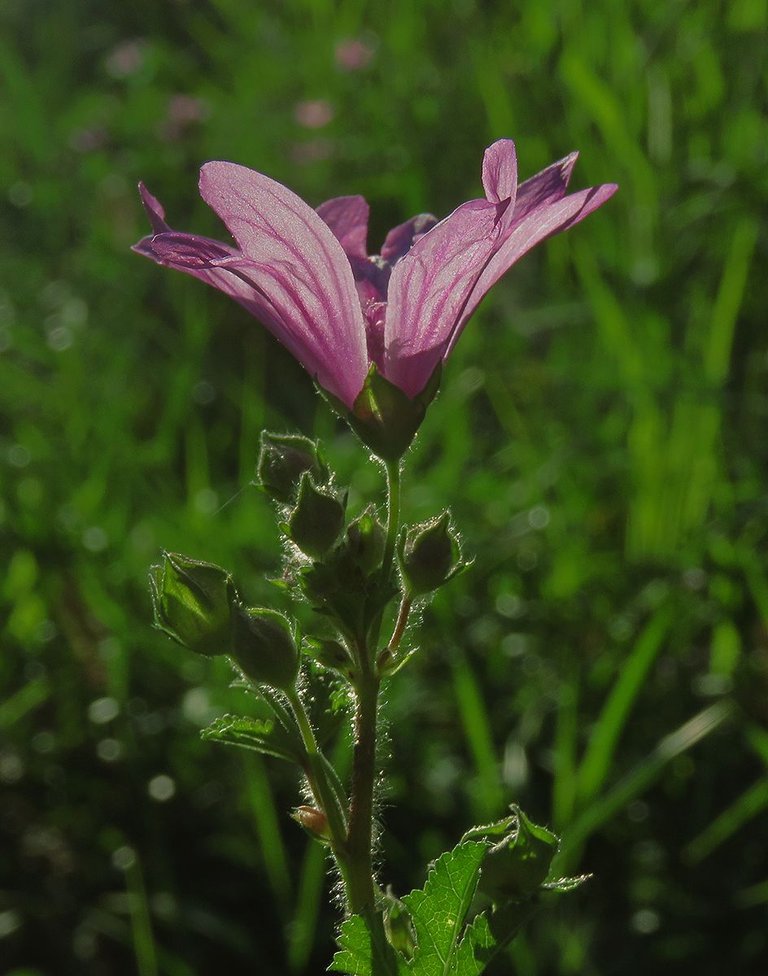
This flower belongs to the Malva sylvestris plant.
Here you can see a bug that belongs to the Pentatomidae family. A shield bug, in other words. I mean, two shield bugs ...
... a mating pair of Eurydema ornata shield bugs.
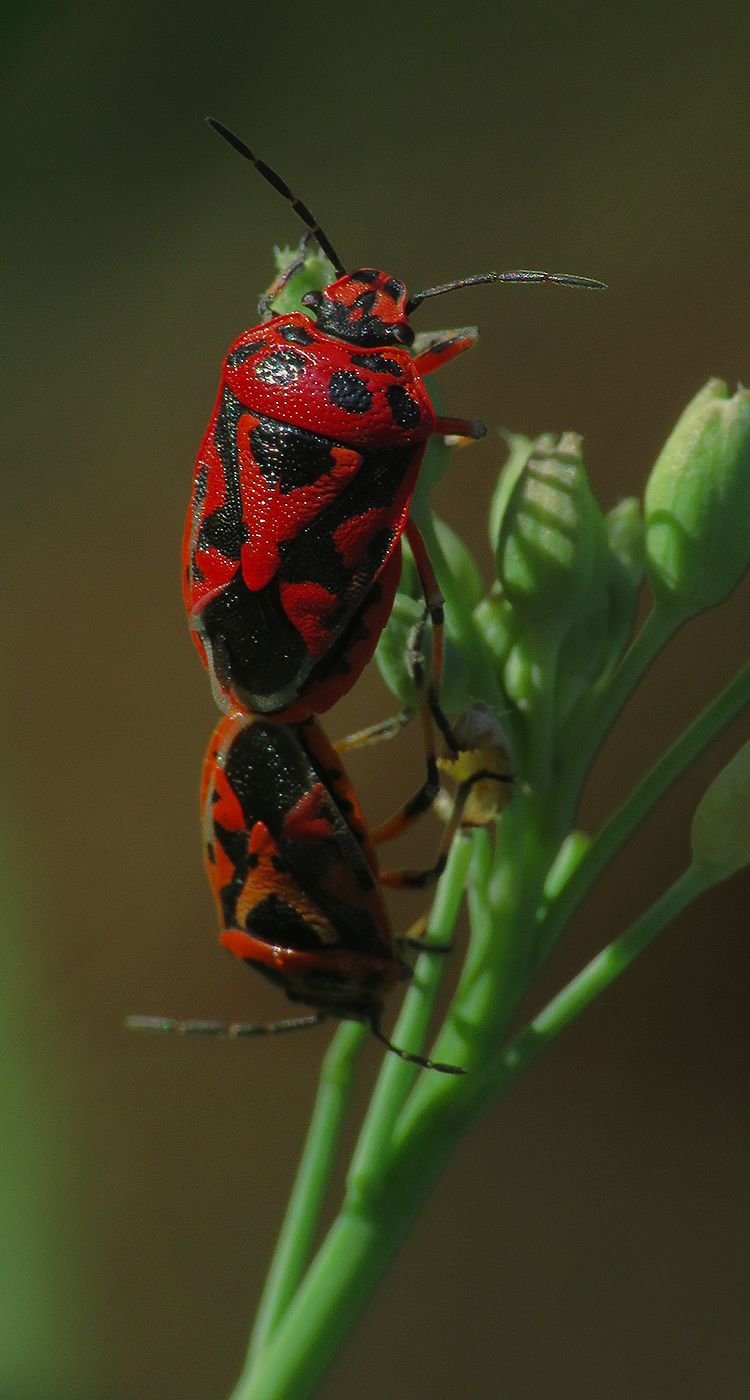
I like the color and the markings of these bugs very much. Those shapes always remind me of some kind of playing card design. You know, like clubs, diamonds, spades, stuff like that. Different, but still somehow in line with those symbols. A bit like something that can be found in Alice's Wonderland.
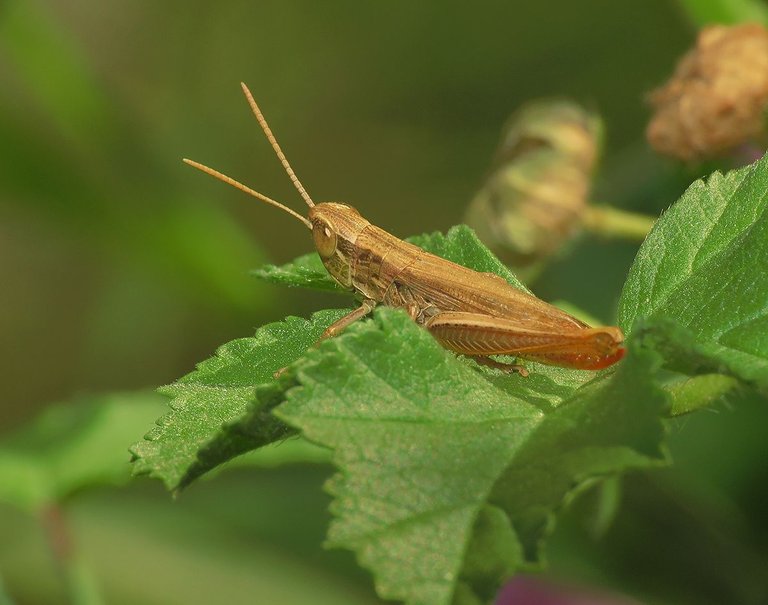
This is the Chorthippus vagans grasshopper.
Before walking back to my car and driving back home, I decided to visit the Uloborus walckenaerius one more time.
This time, the spider looked a lot like a dry fragment of one of the surrounding plants that somehow ended up caught in the web.
AND THAT'S IT. I HAD MY DOSE OF NATURE, I COLLECTED ENOUGH MATERIAL FOR TODAY'S POST, AND I FEEL REALLY GOOD & RECHARGED NOW. AS ALWAYS HERE ON HIVE, THE PHOTOGRAPHS ARE MY WORK - THE END


